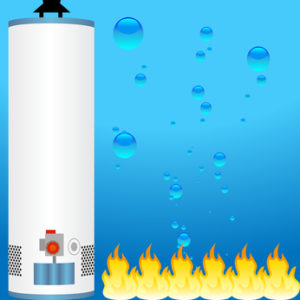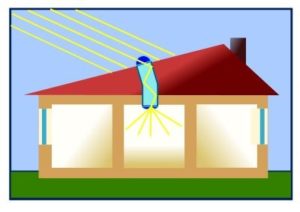
 Water-heater efficiency is a boring topic, but water heating is actually the second largest energy expense in your home, accounting for around 18% of your energy bill. If your water heater is older and less efficient, you can consider getting a newer model, using less hot water, turning down the thermostat on your water heater, OR you can insulate your water heater and hot water pipes.
Water-heater efficiency is a boring topic, but water heating is actually the second largest energy expense in your home, accounting for around 18% of your energy bill. If your water heater is older and less efficient, you can consider getting a newer model, using less hot water, turning down the thermostat on your water heater, OR you can insulate your water heater and hot water pipes.
Insulating your water heater will cost around $30 – you can find pre-cut jackets or blankets available from around $20. This will save you $20-45 annually on energy bills, so you should get your return on your insulation investment in about a year.
1.) Turn off the water heater. For electric heaters, turn off the breaker at the electric panel. For gas water heaters, turn the gas valve to the “Pilot” position.
2.) Measure the height of the water heater and cut the blanket to fit if necessary. Leave the top of the water heater open—it is important not to block the vent on top of a gas unit.
3.) Wrap the blanket around the water heater and temporarily tape it in place. For ease of installation, position the blanket so that the ends do not come together over the access panels in the side of the tank. Some tanks have only one access panel.
4.) Using a marker, mark the areas where controls are so that you can cut them out. For electric water heater units, there will be two panels on the side of the tank. For gas, you’ll need to mark an arch-shaped hole around the gas valves and burner. Be sure to leave plenty of room around the valve and burner areas below. Make the opening at least 1 inch wider than the valve and burner area. Also, mark the area where the pressure relief valve and pipe are. This will be a pipe that sticks out of the side of the water heater.
5.) Install the blanket. Be careful to line up the cut out areas and then tape it in permanently in place.
6.) Turn the water heater back on. Don’t set the thermostat above 130ºF on electric water heater with an insulating jacket or blanket – the wiring may overheat.






 Water-heater efficiency is a boring topic, but water heating is actually the second largest energy expense in your home, accounting for around 18% of your energy bill. If your water heater is older and less efficient, you can consider getting a newer model, using less hot water, turning down the thermostat on your water heater, OR you can insulate your water heater and hot water pipes.
Water-heater efficiency is a boring topic, but water heating is actually the second largest energy expense in your home, accounting for around 18% of your energy bill. If your water heater is older and less efficient, you can consider getting a newer model, using less hot water, turning down the thermostat on your water heater, OR you can insulate your water heater and hot water pipes.



